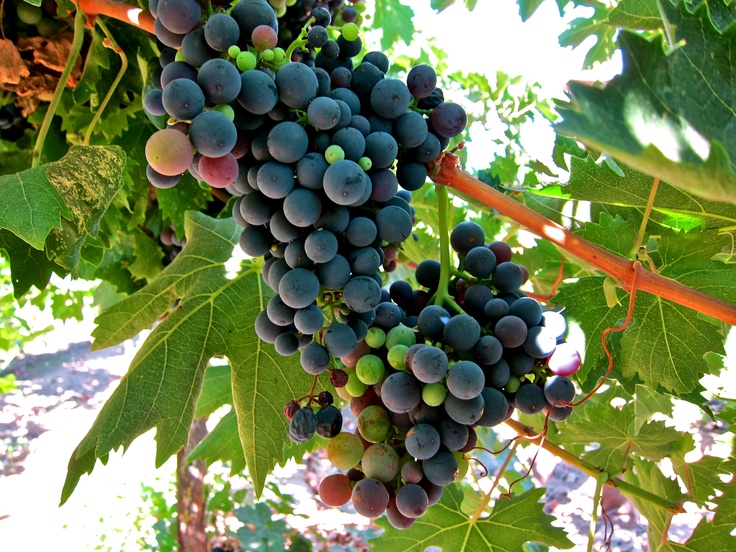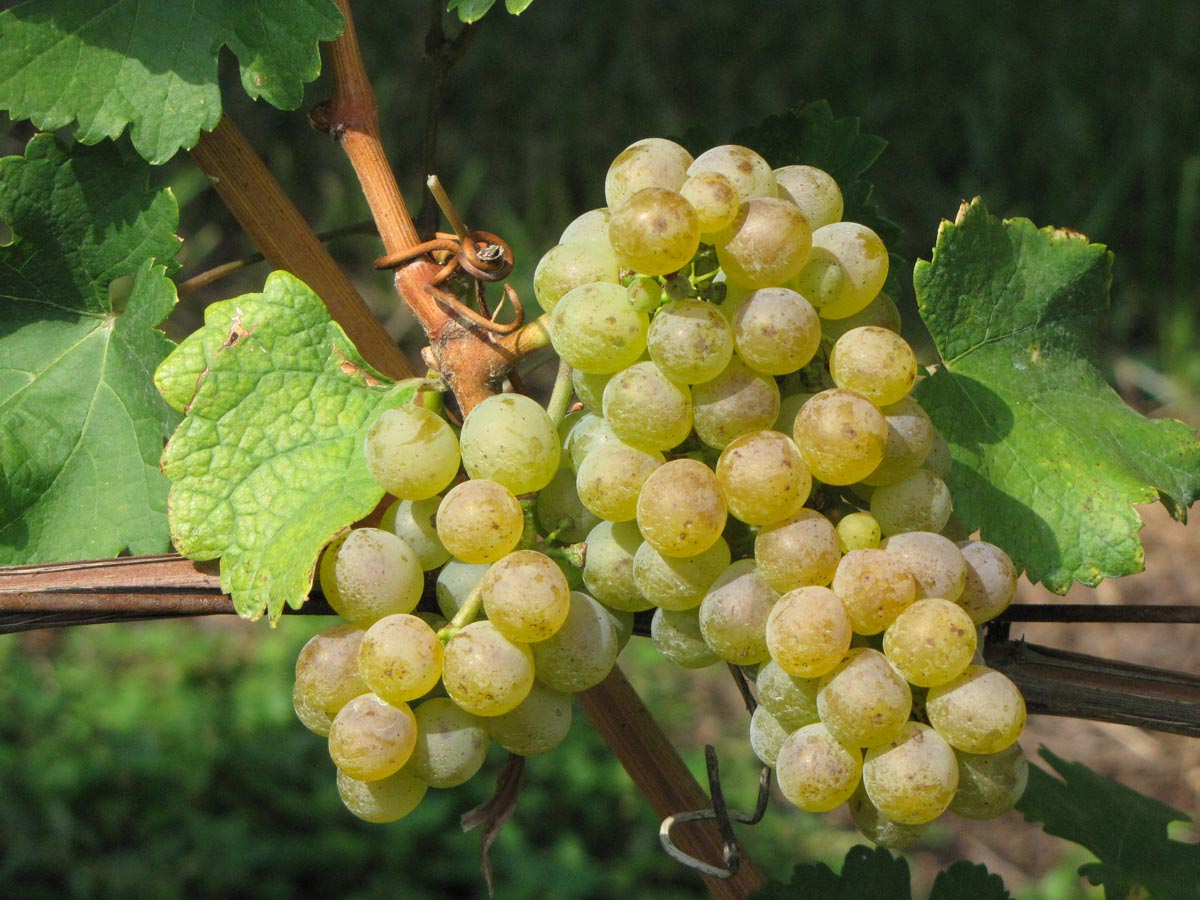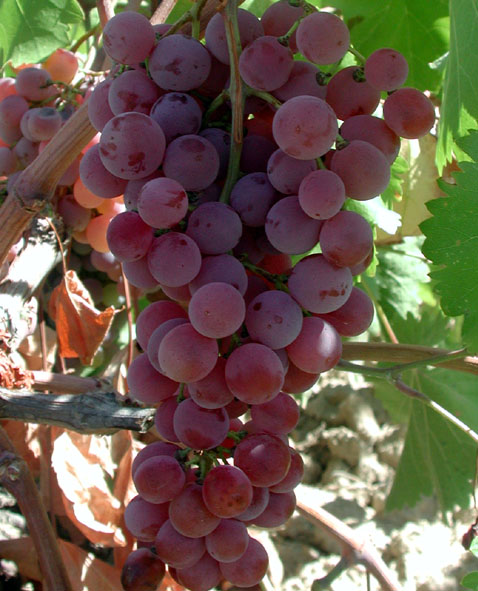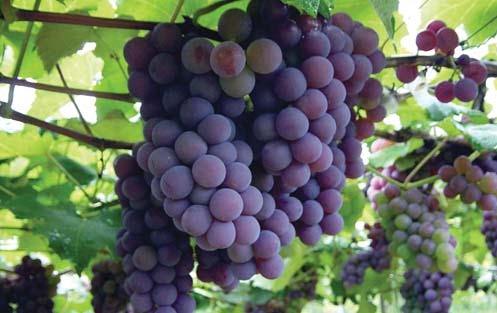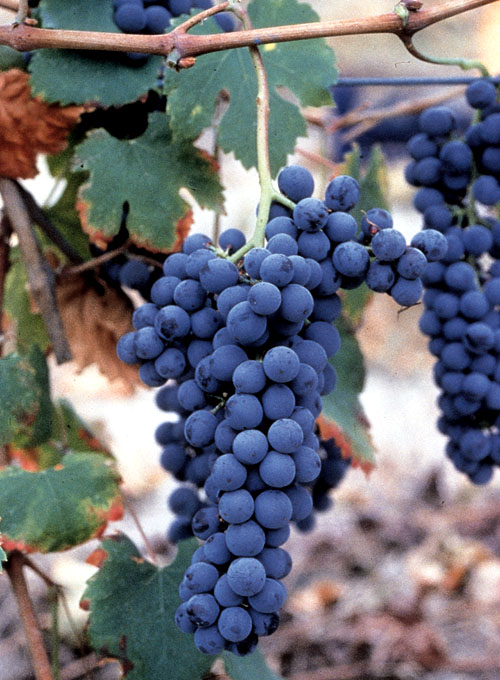
A bunch of Grignolino grapes just hanging around the other week. Spot the millerandage (uneven ripening), YIKES!
Any of you readers in any way familiar with Good Food Revolution will be more than aware of my passion for the wines of Beaujolais. As my palate evolves I have continually found myself craving the lighter hued, delicate tasting reds made with Gamay, Trousseau/Bastardo, Loire Cabernet Franc, and, of course, Pinot Noir. Now I can add to this list wines made with the Piedmontese Grignolino.
Whether the name Grignolino comes from a reference to the number of seeds in the berries (three in Grignolino, two in almost all other grapes), or the fact that the wines natural austerity can make one grimace (from the Piemontese Grignolé), there’s no denying that this is one wholly intriguing varietal.
Once known as Barbesino the grape was widely planted in the region, highly prized and often fetched the same prices as Barolo. Today Grignolino makes up a scant 1% of Piemontese plantings. When one looks at the details it’s not hard to see how this poor grape fell out of favour, seeing as it requires the most well exposed sites to come into its own, and, yes, those sites are almost always planted to grapes that reward the grower with healthier fiscal returns (read: Nebbiolo)… Yes, it’s the same old story once again.
The Grignolino is also prone to about everything going, whether we are talking about a terrible talent for succumbing to rot due to the vine’s tight clusters, through some old virus-ridden biotypes, to a propensity for chronic millerandage that can see some of the most uneven ripening I have ever witnessed. Oh yes, and due to the small berries and larger mass of pips, the bunches yield so much less juice that most other varietals.
So as you can see, the cards are hardly stacked in Grignolino’s favour.
And then there are the wines themselves: light in both hue (cranberry-hued with an orange rim is typical) and booziness (usually 11.5% – 12.5% alcohol) and inherently high in acid and tannins. As I stated at a recent seminar in Barolo “The wines of Grignolino are not for everyone, but they are certainly wines for me”; You see I happen to enjoy wines with such qualities, with delicate aromatics/flavours of tart raspberries, red cherries, and white pepper (a hint of rotundone perhaps?), and thankfully free from the cosmetic application of oak (more than enough tannins in there already thank you very much).
And of course with such acid and tannins the wines of Grignolino are delightful with all manner of dishes, making for some of the best food wines out there. Track some down today.

Edinburgh-born/Toronto-based Sommelier, consultant, writer, judge, and educator Jamie Drummond is the Director of Programs/Editor of Good Food Revolution… And although this is not a grape for everyone, it is certainly a grape for me.

